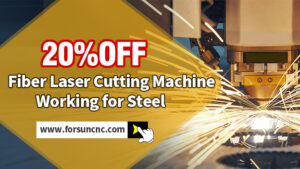When assessing the cost of fiber laser cutting machines, several factors come into play, influencing the overall price range:
- Power and Performance:
- Entry-Level Machines: Typically have lower power ratings, ranging from 500W to 1.5kW. They are suitable for basic cutting tasks on thin materials.
- Mid-Range Machines: Offer higher power levels, usually between 2kW to 4kW, enabling more versatile cutting capabilities on medium-thickness materials with greater precision.
- High-End Machines: Feature even higher power outputs, from 6kW to 12kW or more. These machines excel in heavy-duty industrial applications, offering rapid and precise cutting of thick materials.
- Features and Functionality:
- Entry-level machines may have limited features and basic functionality, while high-end models often come equipped with advanced features such as automatic material handling, integrated CAD/CAM software, and real-time monitoring systems.
- Specialized machines tailored for specific applications, such as tube cutting or 3D cutting, may command higher prices due to their specialized capabilities.
- Build Quality and Brand Reputation:
- Established brands known for their quality and reliability may have higher upfront costs but can offer long-term reliability and support.
- Lesser-known brands or manufacturers may provide more budget-friendly options but could carry higher risks in terms of performance and support.
- Additional Expenses:
- Maintenance and Service Plans: Regular maintenance is crucial for keeping the machine in optimal working condition, and service plans may add to the overall cost.
- Installation and Training: Professional installation and comprehensive operator training can ensure efficient and safe operation but may require additional investment.
- Software and Accessories: Depending on the specific cutting tasks, additional software licenses or accessories such as rotary axes for tube cutting may be necessary, adding to the overall expenditure.
- Customization and Integration:
- Custom-built or highly specialized machines designed for unique applications may involve additional costs associated with customization, integration with existing workflows, and specialized tooling.
By carefully considering these factors and aligning them with your specific cutting needs and budget constraints, you can make an informed decision when investing in a fiber laser cutting machine.






